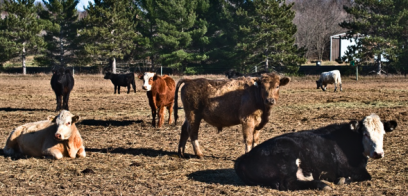This has been an unbelievable autumn. The weather has been gorgeous and it’s made for a warm invitation to finish summer projects before winter sets in.
This year’s crops yielded really well. Our hay and corn silage supplies for winter are some of the best in recent memory. The timely rainfall this summer really played a critical role in keeping plants nourished and productive. Although summer started rather cool, July and August provided the necessary heat units to spur plant growth. Our cows came off of grass this fall looking plump and content. They weaned off strong, healthy calves that are really starting to settle in and grow well.
Last week we pregnancy-checked our cowherd and saw good results. Pregnancy-checking is critical to the survival of a cattle operation. Open (non-pregnant) cows lose money. They consume feed and have nothing to show for it.










